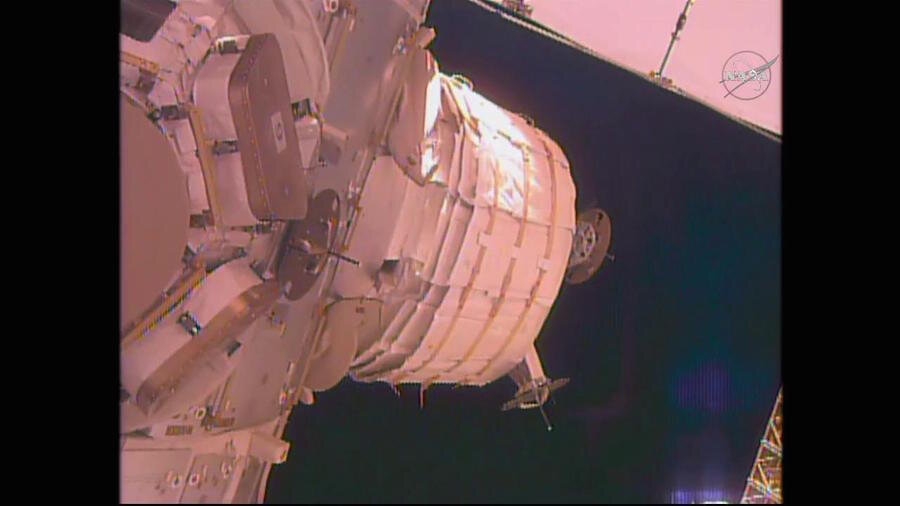NASA plans deflate when expandable module inflation flops
Loading...
Inflating the first expandable room in space did not go as smoothly as NASA scientists had hoped.
Early Thursday, NASA temporarily iced plans to inflate the Bigelow Expandable Activity Module (BEAM) after several failed attempts. NASA and Bigelow experts are currently analyzing the module to see what went wrong.
What's riding on a successful inflation? A two-year research agreement and a potentially viable technology to aid deep-space exploration.
BEAM is a 3,086-pound space pod made of fabric and Kevlar-like materials, The Christian Science Monitor reported last month. At first, the pod is compacted to look like a scrunched 7-foot-long soda can, with a diameter of roughly 8 feet. Once air is blown into the pod, it is set to expand to a size of 13 feet long and 10.5 feet wide.
The pods could be an ideal habitat for astronauts in space, NASA scientists had hoped. The space agency partnered with Bigelow Aerospace to test the module in the vacuum of space.
The original plan was to attach BEAM to the International Space Station (ISS), inflate it, close it off, and have astronauts periodically take measurements of the space over a two-year period. Astronauts would check sensors inside the module that could help determine how the Kevlar-like material and fabric was holding up against space junk, solar radiation, and extreme temperatures.
After the test was complete, the pod would be ejected from the ISS and would burn up in the atmosphere.
If BEAM some day proves successful, Bigelow Aerospace, founded in 1999 by hotel tycoon Robert Bigelow, has plans to one day use the technology to make inflatable habitats in low Earth orbit, on the surface of the moon, and Mars, according to Space.com.
"When we're traveling to Mars or beyond, astronauts need habitats that are both durable and easy to transport and to set up," NASA wrote in a Tumblr post. "That's where expandable technology comes in. BEAM is one of the first steps to test expandable structures as a viable alternative to traditional space habitats," the space agency said.
But first, the modules need to be able to inflate in space.
When NASA began prep work to start the inflation of BEAM early Thursday, things were going smoothly. The restraining straps around the module were successfully released and astronaut Jeff Williams was ready to start the process.
NASA gave the signal for Mr. Williams to open a oxygen valve for a few seconds to begin transferring air from the space station to BEAM. And then – nothing.
The inflatable module did not respond to the brief release of air. The ground team and Williams continued trying to inflate the module via brief bursts of air from the ISS, but were unable to get any response before NASA decided to pause its plans.
"Unfortunately, we're going to have to stand down with the BEAM operations today," NASA ground controller Jessica Meir radioed Williams, according to NPR. "We've been assessing all the parameters here from the ground, and due to our set of no-go conditions and not seeing any noticeable movement, we're going to have to reassess further from here."
Bigelow and NASA experts are still attempting to find what went wrong with the initial inflation attempt. If the data looks good for a second try, ISS staff could restart the process as soon as Friday.






